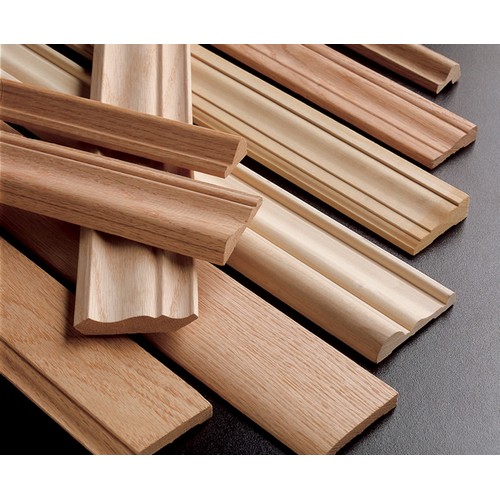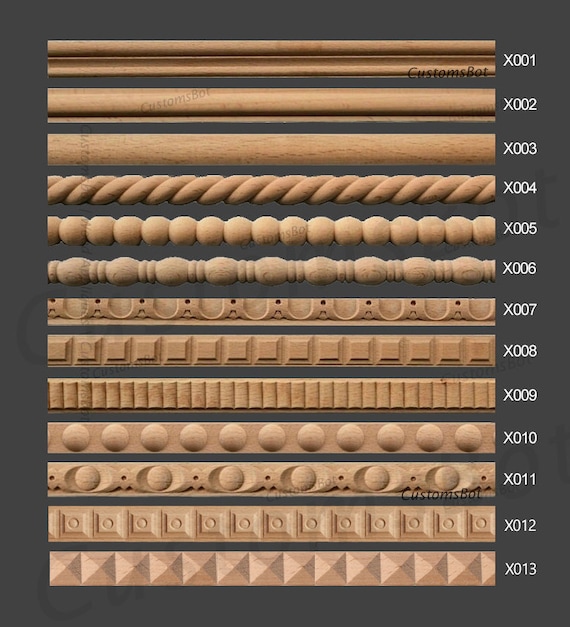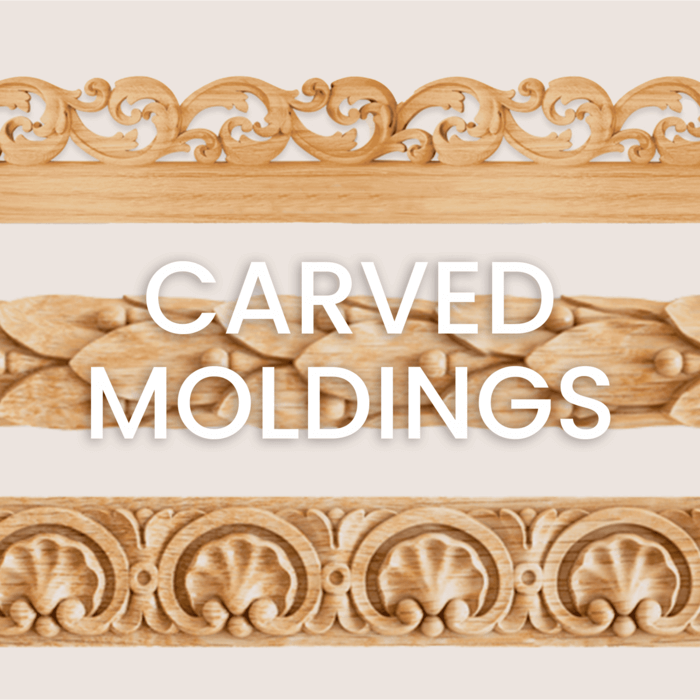When it comes to home decor, there’s something timeless and elegant about decorative wooden molding. As a home improvement enthusiast and someone who has spent years experimenting with various design elements, I’ve learned that the right molding can completely transform the atmosphere of a room. In this comprehensive guide, we’ll explore everything you need to know about decorative wooden molding—from styles and installation to maintenance and design tips. Let’s dive in!
What is Decorative Wooden Molding?
Decorative wooden molding refers to the trim and details made from wood that are used to enhance the appearance of walls, ceilings, doors, and any transitional space in a home. This decorative element not only adds beauty but also showcases craftsmanship and attention to detail. It’s available in various styles, sizes, and materials to suit any aesthetic.
Types of Decorative Wooden Molding
Understanding the different types of molding can help you decide which is best for your home. Below, I’ve categorized some of the most popular types:
- Crown Molding: Installed at the intersection of walls and ceilings, crown molding adds height and sophistication.
- Baseboards: These are the boards that run along the bottom of walls, providing a finished look and protecting the walls from scuffs.
- Chair Rails: Traditionally used to protect walls from furniture, chair rails now serve a decorative purpose, often creating a visual break in wall paint.
- Wainscoting: A paneling technique that adds depth and interest to walls while providing protection.
- Door and Window Casings: The trim around doors and windows enhances their appearance and provides a decorative transition from wall to frame.
Choosing the Right Style of Decorative Wooden Molding
Your choice of molding style should reflect the overall design theme of your home. Here’s a quick comparison to help you choose:

| Style | Best Suited For | Key Features |
|---|---|---|
| Modern | Contemporary homes | Sleek, simple lines with minimal detailing. |
| Traditional | Classic homes | Intricate designs, often with curves and ornate elements. |
| Rustic | Cabins or farmhouse styles | Natural wood finishes and a rough-hewn appearance. |
| Industrial | Modern lofts | Raw materials, simple designs, and exposed elements. |
Benefits of Installing Decorative Wooden Molding
Installing decorative wooden molding in your home can have several benefits, including:

- Enhancement of Interior Design: It adds an element of sophistication, elevating the overall aesthetic.
- Increased Property Value: Professional installation of molding can boost your home’s market value.
- Customization: Molding comes in various shapes and sizes, offering versatility in design.
- Durability: Wooden molding, when properly maintained, can last for many years.
Installation Guide for Decorative Wooden Molding
Thinking about installing decorative molding yourself? Here’s a step-by-step guide that I’ve personally followed, with some tips from my own experiences:

1. Planning Your Design
Before you start, plan the design and measurements. Use graph paper to sketch your room and visualize where the molding will go. This step will save you time and potential mistakes.
2. Gather Your Tools and Materials
You will need:
- Measuring tape
- Miter saw
- Level
- Nail gun or hammer
- Wood glue
- Paint or stain (optional)
- Caulking

3. Measure and Cut the Molding
Measure the lengths required for each wall. Remember to account for corners by using a miter saw to make precise 45-degree cuts at the ends of each piece of molding.
4. Secure the Molding
Begin at one corner and use your nail gun to attach the molding to the wall. Use a level to ensure that it is straight. If you are using glue, apply it along the back of the molding before securing.

5. Finishing Touches
After fixing the molding in place, fill any nail holes with wood filler and caulk any gaps. Finally, paint or stain the molding to achieve the desired finish.
Pros and Cons of Decorative Wooden Molding
Like any design element, decorative wooden molding has its pros and cons. Here’s a quick rundown:

Pros
- Timeless Appeal: Wooden molding has a classic look that never goes out of style.
- Variety: There are countless designs, so you can find something to match any decor.
- Customization: You can paint or stain wooden molding to suit your personal taste.
Cons
- Cost: High-quality wood can be expensive depending on the type.
- Maintenance: Wooden molding requires some upkeep to prevent warping or damage.
- Installation Challenges: For beginners, cutting and installing molding can be tricky.

Maintenance Tips for Decorative Wooden Molding
To keep your decorative wooden molding looking its best, consider the following maintenance tips:
- Regular Cleaning: Dust the molding regularly to prevent dirt buildup.
- Inspect for Damage: Check for signs of wear, such as cracks or water damage, and address them promptly.
- Repainting or Staining: If the finish begins to fade, consider repainting or re-staining the molding to refresh its look.
Incorporating Decorative Wooden Molding into Your Home Design
Now that you know about decorative wooden molding, how can you incorporate it into your design?
Creating a Cohesive Look
Ensure that your molding complements your furniture and other design elements. For instance, if you have dark wood furniture, consider dark stained molding for a unified aesthetic.
Mixing Styles
Don’t be afraid to mix different types of molding. For example, pairing modern crown molding with rustic paneling can create a unique and visually interesting space.
Color Schemes
Consider the color of the molding. White molding can brighten up a room, while stained molding can add warmth and richness.
Frequently Asked Questions (FAQs)
What is the best type of wood for decorative molding?
Oak, maple, and pine are popular choices for decorative molding due to their durability and ability to hold paint or stain well.
Can I install decorative molding myself?
Yes, with the right tools and patience, many homeowners successfully install decorative wooden molding on their own.
How do I choose the right size of molding?
The size of the molding should be proportionate to the height of your ceilings and the scale of the room. Generally, taller ceilings benefit from wider moldings.
Is decorative wooden molding costly?
The cost can vary significantly based on the type of wood and complexity of the design, but there are options available for every budget.
How can I remove old molding?
Use a pry bar and a putty knife to carefully remove old molding without damaging the wall. Take your time to avoid causing any damage.
Conclusion: Transform Your Home with Decorative Wooden Molding
Decorative wooden molding can be a stunning addition to any home, providing elegance, charm, and character. Whether you choose to hire a professional or take on a DIY project, the results can be incredibly rewarding. Remember to choose a style that reflects your personal taste and complements your existing decor. With the right approach, decorative wooden molding can turn your ordinary spaces into extraordinary ones.
So, are you ready to elevate your home decor with beautiful molding? I can’t wait to hear about your projects and see how you incorporate these ideas into your own space!